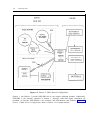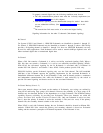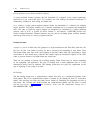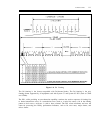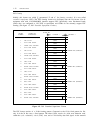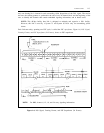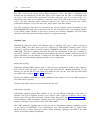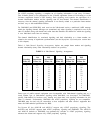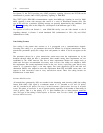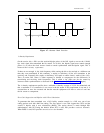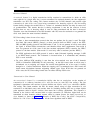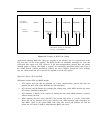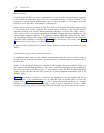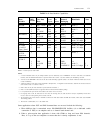
1-14
INTRODUCTION
The CRC is used at the receive end to detect transmission errors. The CRC is calculated at the
transmit end and multiplexed into the DS1 signal. At the receive end, the CRC is recalculated using
the data in the received ESF superframe and then compared with the received CRC. If a
transmission error (such as one caused by a noise hit) results in the CRC being in error, a misframe
occurs. The DS1 interface counts misframes and uses the count for processing DS1 facility
performance indicators, such as bit error rates, major alarms, and minor alarms.
The ESF reframing algorithm can determine the correct framing pattern embedded in the
DS1/DMI/ISDN-PRI signal even if the 8-bit words for the 24 channels carry a bit sequence identical
to the framing pattern. Because of this and its superior error detection capabilities, the ESF format
should be used (rather than D4 framing) whenever an application permits.
Signaling Types
DS1/DMI provides four distinct and different types of signaling. One type is called robbed-bit
signaling (RBS). The other three types are variations of 24th-channel signaling called AT&T
proprietary signaling, DMI bit-oriented signaling (DMI-BOS), and DMI message-oriented signaling
(DMI-MOS). The type of signaling used does not place any requirements on the type of framing or
line coding. However, a direct relationship exists between the type of signaling used and the type of
signals transmitted over the channels. A facility that uses RBS transmits voice or voice-grade data; a
facility that uses 24th-channel signaling transmits voice or digital data.
Robbed-Bit Signaling
Robbed-bit signaling (RBS) replaces (that is, robs) the least significant bit (LSB) of each channel’s
8-bit word in every 6th frame. It then replaces this word with the signaling information for that
channel. For D4, the 6th and 12th frames carry RBS; for ESF, the 6th, 12th, 18th, and 24th frames
carry RBS (refer to figures 1-4 and 1-5, respectively).
Because the signaling information is carried embedded in each channel’s 8-bit word, RBS signaling is
also called inband signaling.
Facilities using RBS cannot be used to transmit 64K-bps data.
24th-Channel Signaling
24th-channel signaling permits DS1 channels to use the full 64K-bps bandwidth on the other 23
channels. This type of signaling provides clear channels (clear, except for 1s-density issues). Ones-
density issues are those issues associated with the facility being used. (See Line-Coding Formats for
more information.) 24th (D-channel) signaling places the signaling bits (or LAPD message bytes) for
channels 1 through 23 into the 8-bit word of the 24th-channel.
The AT&T proprietary signaling type was the first type of 24th-channel signaling provided by System
75 and System 85 DS1/DMI. It was developed to carry DCP-formatted data (in digital form)
between System 75 and/or System 85 switches. AT&T proprietary signaling is described in the initial
release of the DMI technical specification.



